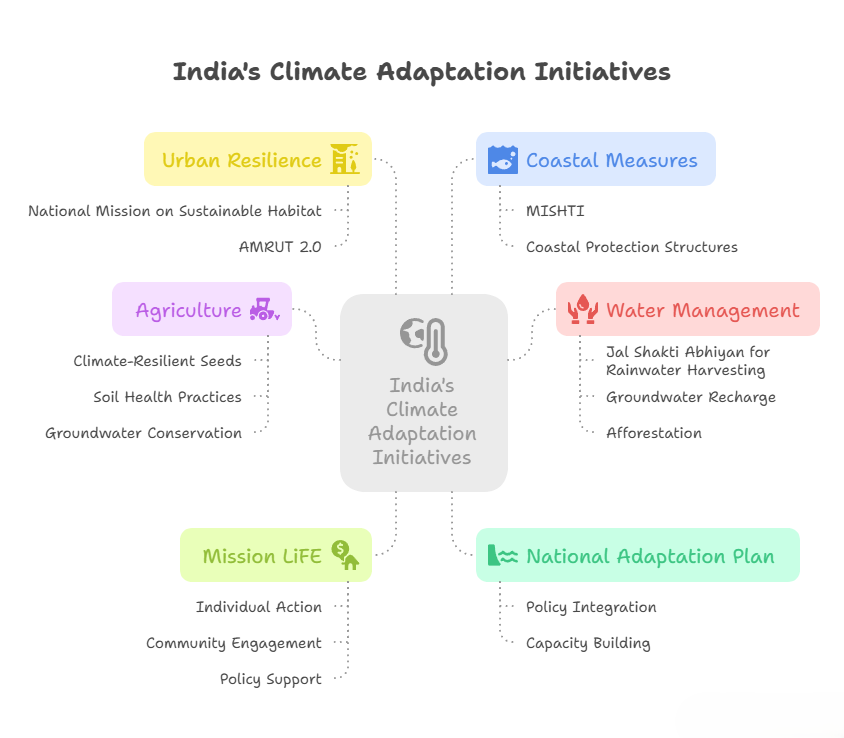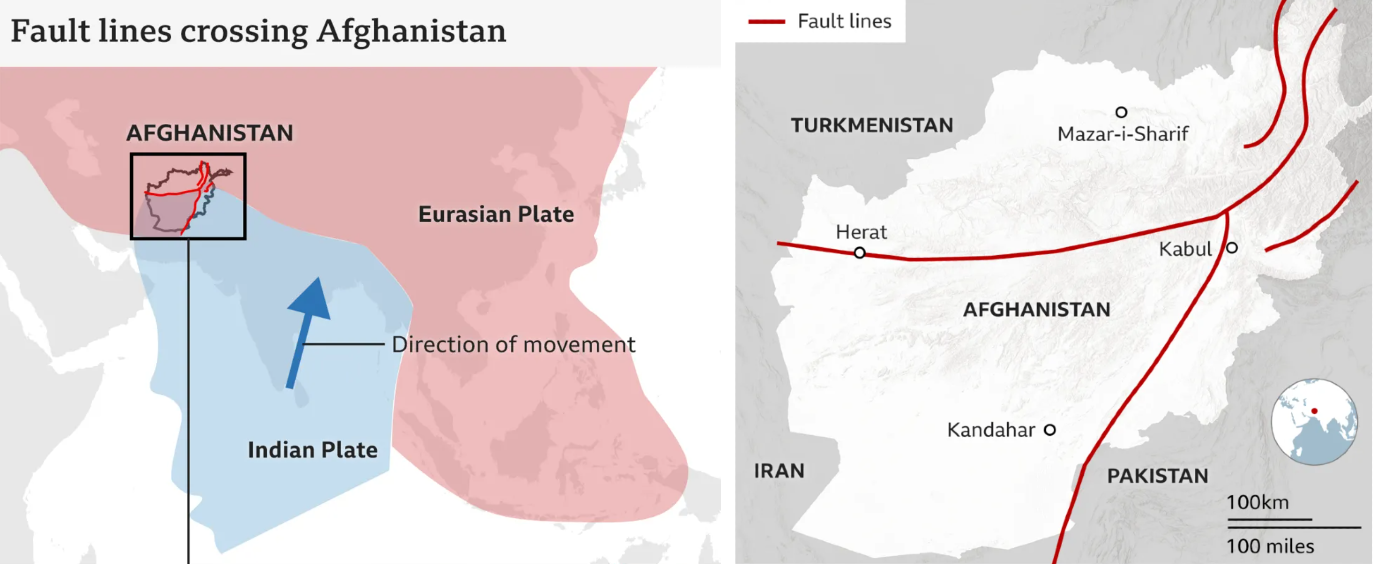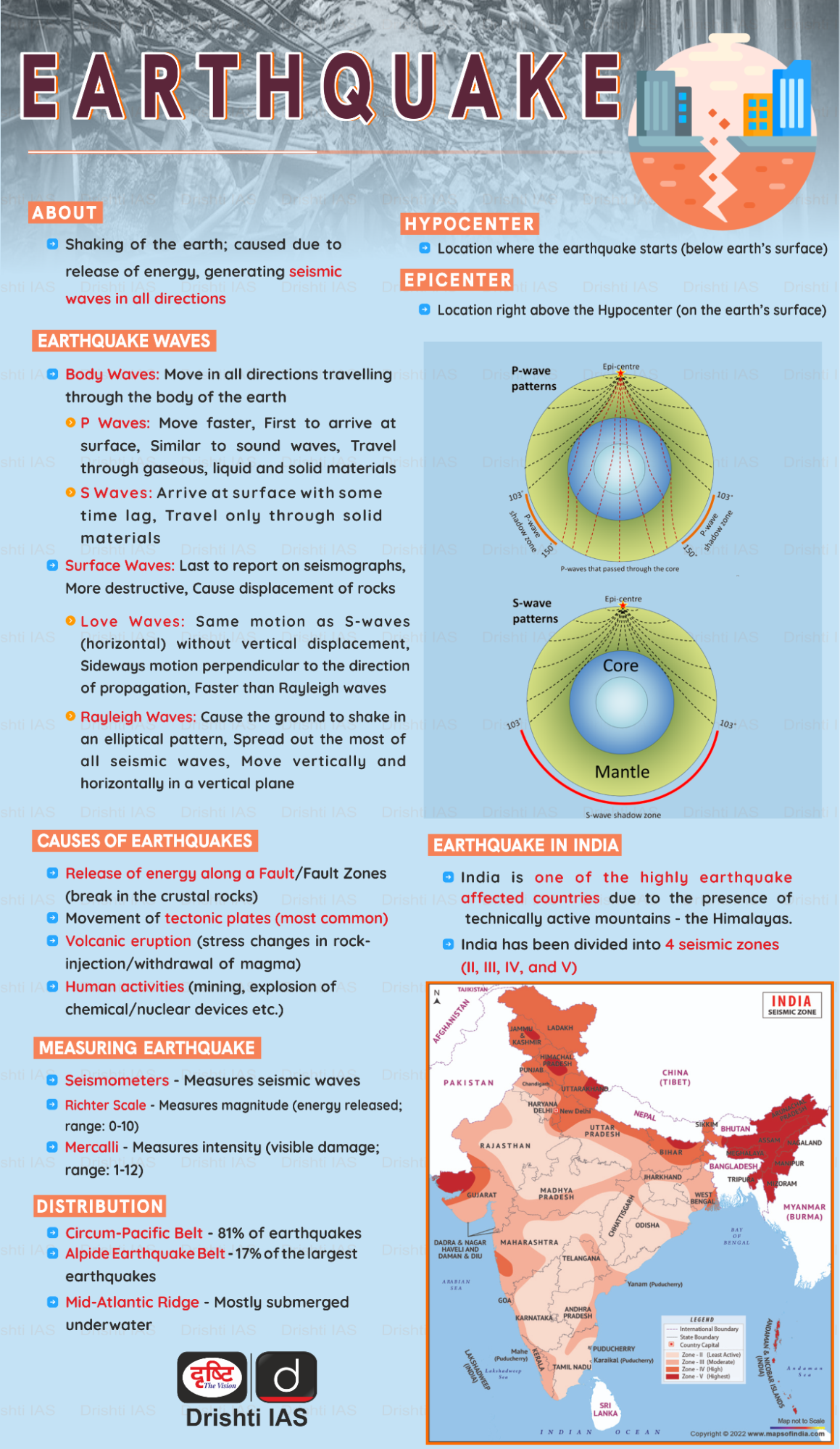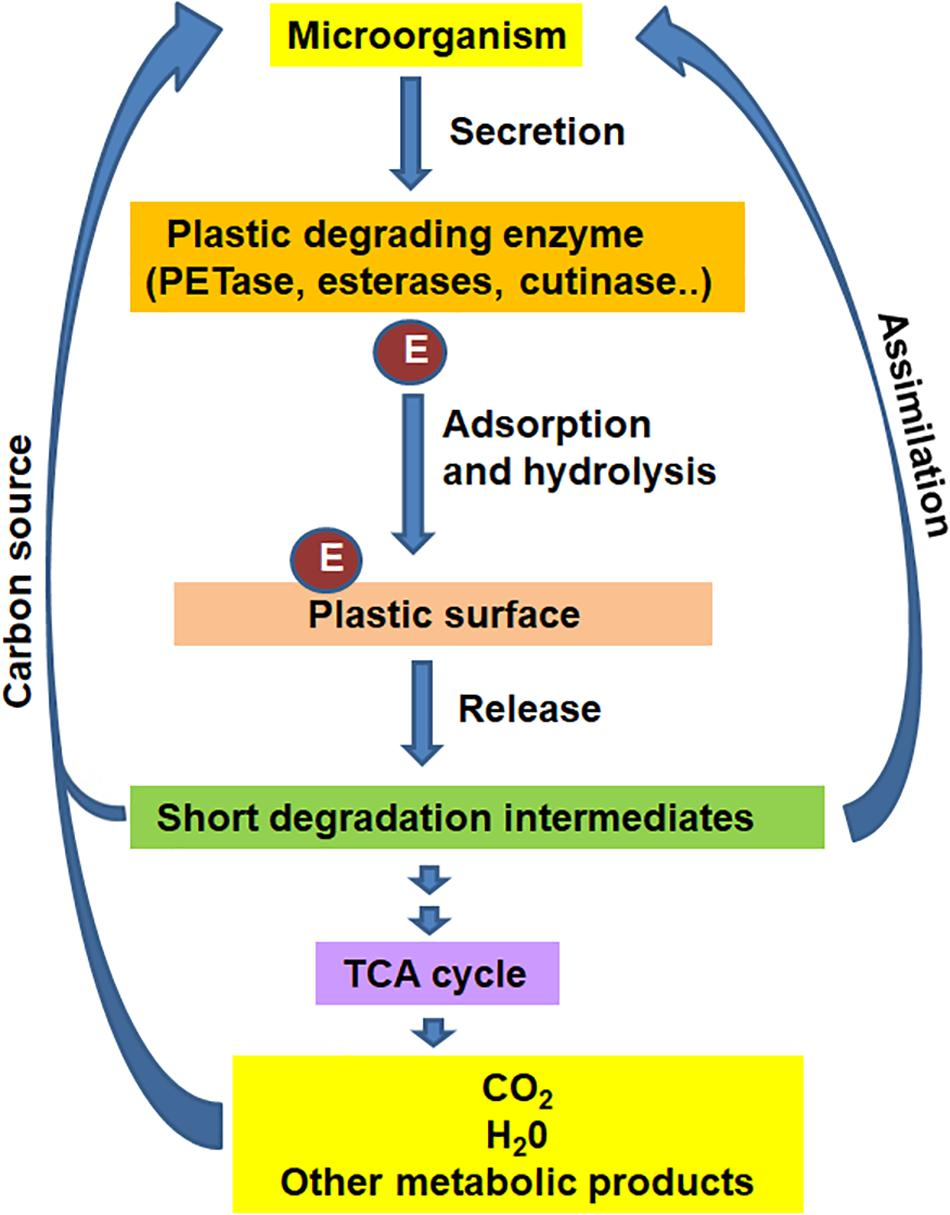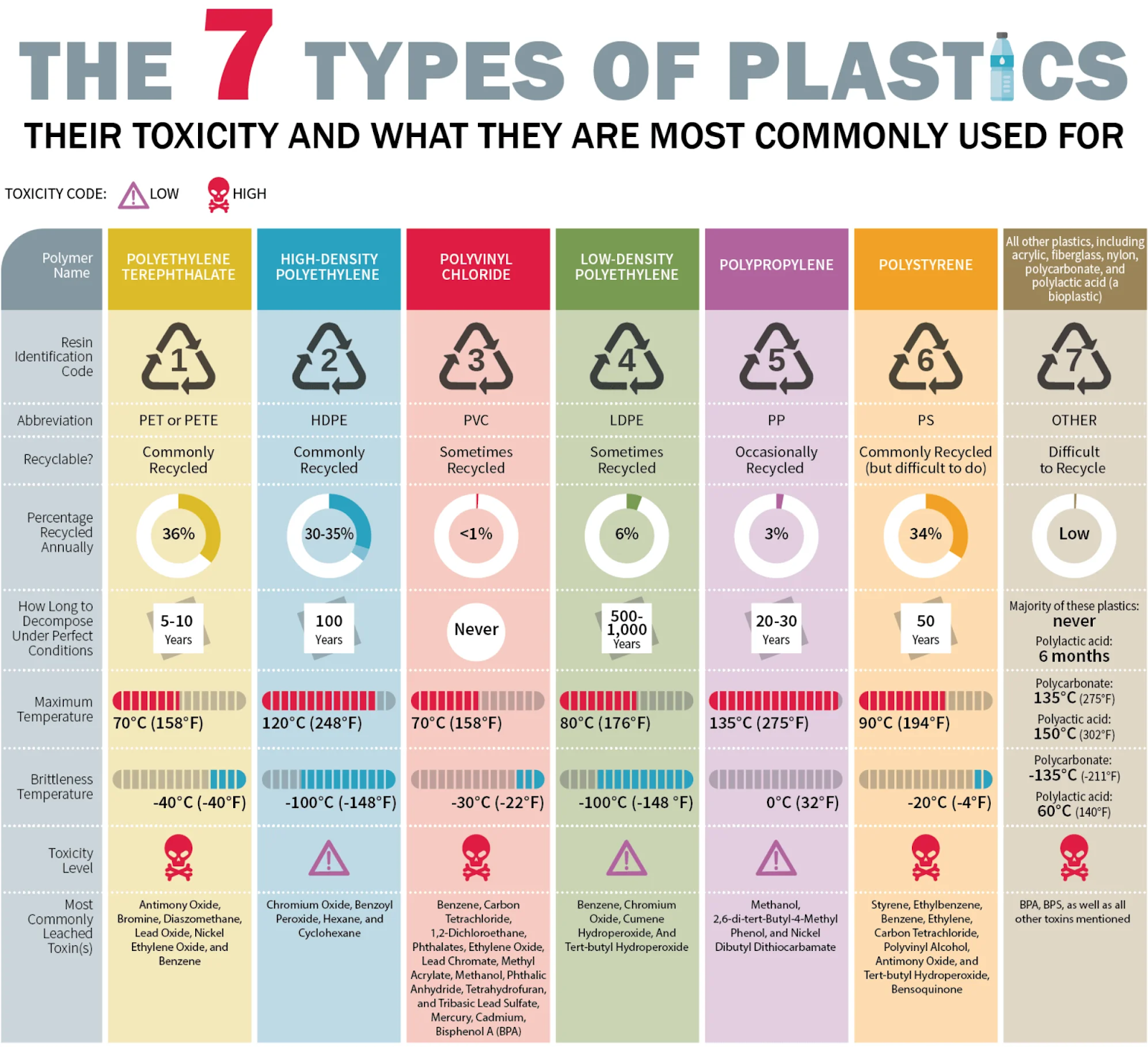Rapid Fire
Global Biodiversity Pattern
A global study published in Nature Ecology & Evolution reveals a universal pattern in species distribution across biogeographical regions, offering new insights into global biodiversity organization.
Key Findings of the Study:
- Onion-like Structure: Dense core zones with high richness and endemicity, gradually transitioning through moderate diversity layers to species-poor outer zones dominated by generalists (subsets of inner species).
- Universal Pattern: Despite regional differences (e.g., South America vs. Africa), species in diverse taxa (birds, mammals, amphibians) follow a common biogeographical structure.
- Climatic Determinants: Temperature and rainfall predict species distribution with 98% accuracy, showing the strong role of environmental filters like climate and elevation.
Implications for Conservation:
- Redefining Focus: Move beyond administrative protected areas towards ecological corridors and biodiversity hubs, crucial for climate-sensitive regions like the Himalayas.
- Addressing Data Gaps: Underrepresentation of tropical regions, Global South, and certain taxa (e.g., dragonflies, trees) calls for more region-specific studies in India.
- Climate-Responsive Strategy: Monitoring rainfall and temperature shifts can support adaptive conservation planning.
|
Read More: Biodiversity as India's Sustainable Edge |


International Relations
25th Shanghai Cooperation Organisation (SCO) Summit
For Prelims: Shanghai Cooperation Organisation, Pahalgam attack, Kailash Manasarovar Yatra, BRICS, Line of Actual Control
For Mains: India’s foreign policy and strategic autonomy, India–China bilateral relations and border management
Why in News?
The Prime Minister of India participated in the 25th Meeting of the Council of Heads of State of the Shanghai Cooperation Organisation (SCO), held in Tianjin, China.
What are the Key Outcomes of 2025 SCO Summit?
- Counter-Terrorism: Tianjin Declaration strongly condemned terrorism, including the Pahalgam attack, and called to end cross-border movement of terrorists, and opposed use of extremist groups for mercenary purposes.
- Membership & Partnerships: Laos accepted as a partner country, taking SCO’s total strength to 27 (10 members ( including India) + 17 partners).
- Global Governance: The Global Governance Initiative (GGI) was proposed to promote sovereign equality, multilateralism, and a just global order. GGI reflects India’s vision of “One Earth, One Family, One Future”.
- Additionally, member states opposed unilateral coercive measures, including economic sanctions, that contravene United Nations and World Trade Organization (WTO) principles.
- Promotion of Cultural and Social Values: It welcomed UNGA resolution against glorification of Nazism, neo-Nazism, racism, and xenophobia.
- Reaffirmed people-to-people engagement and the importance of mutual respect and collaboration among member states.
- The summit condemned military actions in Gaza and Iran and emphasized inclusive governance in Afghanistan for lasting peace.
- Economic & Development Cooperation: The summit emphasized stabilizing global trade, expanding bilateral trade and investment, and setting up an SCO Development Bank.
What is the Role of SCO in Global Multilateralism?
- Expanding Geopolitical Reach: SCO has grown beyond its Central Asian origins, now representing about 23% of global GDP and 42% of the world’s population.
- Its widening membership and partnerships (e.g., Turkey, a North Atlantic Treaty Organization (NATO) member, as dialogue partner of SCO) showcase its ability to challenge traditional Western alliances.
- It provides space for Global South voices to resist being confined to outdated global frameworks.
- Security and Counter-Terrorism: SCO addresses security voids left by NATO, especially in Afghanistan, through mechanisms like the Afghanistan Contact Group (ACG).
- The Regional Anti-Terrorist Structure (RATS) of SCO in Tashkent, Uzbekistan strengthens cooperation against terrorism, separatism, and extremism.
- Connectivity and Economic Integration: SCO acts as a connectivity catalyst in Central Asia, fostering corridors and projects like the International North-South Transport Corridor (INSTC) and Chabahar Port, which enhance trade and trust.
- The SCO Business Council and Interbank Consortium push forward multilateral economic projects.
- Platform for Civilisational and Developmental Cooperation: India’s initiatives within SCO (start-ups, traditional medicine, Buddhist heritage, digital inclusion) show its potential to go beyond governments and foster people-to-people ties.
- SCO is positioning itself as a forum for inclusive development, aligning with the aspirations of the Global South.
- Reforming Global Institutions: SCO members push for UN reform and more inclusive global governance, challenging the dominance of post-World War II structures.
- By advocating sovereign equality and multipolarity, SCO seeks a more democratic and just world order.
What are the Challenges Undermine SCO’s Effectiveness?
- Weak Security Mechanisms: The RATS organizes exercises but does little against actual terrorist organizations. Inclusion of states like Pakistan themselves linked with terrorism undermines credibility.
- Unequal Power Dynamics: Central Asian states often feel dominated by China and Russia, rather than treated as equal partners.
- The “Shanghai Spirit” of equality and mutual respect remains more rhetoric than reality.
- Ineffective Economic Integration: SCO agreements (like the Transport Agreement) remain poorly implemented. Intraregional trade within Central Asia remains in single digits, far behind ASEAN’s 25%.
- Trade growth in Central Asia is driven by local dynamics, not by SCO initiatives.
- Unlike ASEAN, which manages disputes while keeping institutions functional, the SCO is increasingly compared to SAARC, active in summits but weak in delivering results.
- Failure to Institutionalize Cooperation: Despite multiple attempts, SCO has failed to establish strong frameworks in development, energy, and free trade.
- Formal structures (banking, finance, business councils) function more as networking forums than decision-making bodies.
What are India’s Concerns Regarding SCO?
- China’s Dominance: China is trying to reshape the SCO into a China-led platform serving its geo-economic and strategic interests, especially to promote the BRI, which India opposes. This risks sidelining India’s role within the grouping.
- Connectivity Projects: India opposes BRI (especially China Pakistan Economic Corridor (CPEC) through PoK), but majority of SCO members strongly support it.
- India remains outside key connectivity initiatives, limiting its economic and strategic influence.
- China’s String of Pearls strategy (naval bases in Maldives, Sri Lanka, South China Sea) threatens India’s regional security. India counters with its “Necklace of Diamonds” strategy, but this rivalry weakens trust within SCO.
- Anti-Western Perception: SCO is often seen as an anti-West bloc, dominated by China, Russia, and now Iran. This complicates India’s foreign policy, as India maintains strong ties with the US, EU, and QUAD partners.
- Terrorism and Pakistan Factor: Despite SCO’s RATS, Pakistan continues to support cross-border terrorism. India’s push for naming Pakistan-based groups is often blocked by China and Pakistan.
How can India Balance Differences and Foster Cooperation within the SCO?
- Strategic Multialignment: India avoids rigid bloc politics, engages in both Western-led (Quad, G20) and China-led (SCO, BRICS) platforms. It reflects India’s pursuit of strategic autonomy and multipolarity.
- Selective Engagement: India engages selectively in SCO initiatives like RATS, avoids commitments that threaten sovereignty, separates contested (borders, security) from cooperative areas (trade, technology), and limits China cooperation to non-sensitive sectors such as renewables, EVs, and AI.
- Leverage Strategic Partnerships: Cooperation with Russia ensures India has an equal voice and counters Chinese dominance. Russia acts as a bridge in India–China multilateral engagement.
- Russia is pushing to revive the RIC (Russia–India–China) trilateral suspended since the 2020 Galwan clash; for India, it provides a channel to engage China without bilateral isolation.
- Border Management with Dialogue: India maintains LAC troop readiness while pursuing disengagement agreements (Depsang, Demchok 2024) and high-level dialogue to reduce friction.
- Regional and Global Forums: India uses SCO/BRICS to influence Eurasian and Global South narratives while using Quad/Indo-Pacific frameworks to balance China’s regional assertiveness.
|
Drishti Mains Question: Q. Discuss the challenges that undermine the effectiveness of the Shanghai Cooperation Organisation (SCO). |
UPSC Civil Services Examination Previous Year Question (PYQ)
Prelims
Q. Belt and Road Initiative’ is sometimes mentioned in the news in the context of the affairs of (2016)
(a) African Union
(b) Brazil
(c) European Union
(d) China
Ans: (d)
Exp:
Proposed in 2013, the ‘Belt and Road Initiative (BRI)’ is an ambitious programme of China for connecting Asia with Africa and Europe via land and maritime networks.
The BRI comprises a Silk Road Economic Belt – a trans-continental passage that links China with Southeast Asia, South Asia, Central Asia, Russia and Europe by land – and a 21st century Maritime Silk Road, a sea route connecting China’s coastal regions with Southeast and South Asia, South Pacific, Middle East and Eastern Africa, all the way to Europe. Therefore, option (d) is the correct answer.
Mains
Q. The China-Pakistan Economic Corridor (CPEC) is viewed as a cardinal subset of China’s larger ‘One Belt One Road’ initiative. Give a brief description of CPEC and enumerate the reasons why India has distanced itself from the same. (2018)
Q. China and Pakistan have entered into an agreement for the development of an economic corridor. What threat does this pose for India’s security? Critically examine. (2014)
Q. “China is using its economic relations and positive trade surplus as tools to develop potential military power status in Asia”. In the light of this statement, discuss its impact on India as her neighbour. (2017)


Facts for UPSC Mains
National Designated Authority for Carbon Markets
Why in News?
The Ministry of Environment, Forest and Climate Change (MoEFCC) has set up a National Designated Authority (NDA) to implement a carbon emissions trading system under Article 6 of the Paris Agreement (2015).
- This is a key step in India’s climate strategy to meet its Nationally Determined Contributions (NDCs).
Article 6 of the Paris Agreement (2015)
- It provides a framework for international carbon markets and non-market approaches, enabling global cooperation to address climate change.
- It was finalised at COP29 (Baku, 2024) to facilitate finance and technology transfer to developing countries.
India’s Nationally Determined Contributions (NDCs)
- As part of its commitments under the Paris Agreement, India has pledged to reduce its GDP’s carbon intensity by 45% by 2030 compared to 2005 levels, and to achieve 50% cumulative electric power capacity from non-fossil sources by 2030.
- Additionally, India aims to create an additional carbon sink of 2.5-3 billion tonnes of CO₂ equivalent by 2030 through afforestation and reforestation.
What is the National Designated Authority (NDA)?
- Role & Composition: The National Designated Authority (NDA) will oversee and authorize carbon credit projects.
- It is a 21-member committee headed by the Secretary of the Environment Ministry, with representatives from key ministries such as External Affairs, Renewable Energy, NITI Aayog, and the Steel Ministry.
- Key Functions:
- The NDA will recommend projects eligible for carbon credit trading under Article 6.4 of Paris agreement.
- It will approve these projects for participation in the carbon market and authorize the emission reduction units (ERUs) generated.
- The committee will ensure that the projects align with India’s Sustainable Development Goals (SDGs), focusing on initiatives like green hydrogen, carbon capture, and afforestation.
- Contribution to Climate Goals: The main goal of the NDA’s projects is to help reduce India’s carbon emissions intensity by 45% by 2030 compared to 2005 levels.
- The carbon credit market will be a vital tool in supporting India’s journey towards achieving these ambitious climate goals.
What are Carbon Markets?
- About: Carbon markets allow trading of carbon credits, where one credit represents one ton of reduced, avoided, or sequestered CO₂ or GHG emissions.
- These credits are purchased by companies or countries to offset their emissions, promoting transparency, accountability, and funding for sustainable projects while enabling international cooperation in emission reductions.
- Types:
- Compliance Markets: Legally binding, created under regulatory frameworks like Emissions Trading Schemes (ETS) or mechanisms like the Clean Development Mechanism (CDM).
- They have penalties for non-compliance. Participants include governments, industries, businesses.
- Eg: EU ETS (2005): First international ETS, China ETS (2021): World’s largest, covering around 1/7th of global fossil fuel emissions.
- Voluntary Carbon Markets (VCMs): Function outside mandatory regulations, operating on voluntary demand and supply.
- Supply originates from private projects or government-certified programs that reduce, remove GHGs, while demand is driven by corporates (ESG goals), individuals (carbon footprint offsetting), and traders (resale profit).
- Compliance Markets: Legally binding, created under regulatory frameworks like Emissions Trading Schemes (ETS) or mechanisms like the Clean Development Mechanism (CDM).
India’s Carbon Market:
- Transition to Market-Based Mechanisms: India is moving towards a rate-based Emissions Trading System (ETS) with the adoption of the Carbon Credit Trading Scheme (CCTS) in July 2024.
- The scheme focuses on emissions intensity, not absolute emissions caps.
- Credit Certificates will be issued to facilities that outperform benchmark emissions intensity levels.
- Institutional & Policy Support:
- National Steering Committee for the Indian Carbon Market (NSCICM): Key body guiding market design and implementation.
- Incentives for Industries: Encouraging adoption of low-carbon technologies.
- Mission LiFE (Lifestyle for Environment): Promotes sustainable lifestyles to reduce carbon footprints.
- Green Credit Program: Encourages individuals and the private sector to participate in emission-reduction projects.
- Significance:
- Positions India to align with Paris Agreement goals while leveraging carbon markets as economic instruments.
- Helps industries manage compliance costs and encourages private sector innovation.
- Supports India’s Net Zero 2070 commitment by scaling up market-driven climate action.
UPSC Civil Services Examination, Previous Year Question (PYQ)
Prelims
Q.1 In the context of India’s preparation for Climate-Smart Agriculture, consider the following statements: (2021)
- The ‘Climate-Smart Village’ approach in India is a part of a project led by the Climate Change, Agriculture and Food Security (CCAFS), an international research programme.
- The project of CCAFS is carried out under Consultative Group on International Agricultural Research (CGIAR) headquartered in France.
- The International Crops Research Institute for the Semi-Arid Tropics (ICRISAT) in India is one of the CGIAR’s research centres.
Which of the statements given above are correct?
(a) 1 and 2 only
(b) 2 and 3 only
(c) 1 and 3 only
(d) 1, 2 and 3
Ans: (d)
Q.2 Which of the following best describes/describe the aim of ‘Green India Mission’ of the Government of India? (2016)
- Incorporating environmental benefits and costs into the Union and State Budgets thereby implementing the ‘green accounting’.
- Launching the second green revolution to enhance agricultural output so as to ensure food security to one and all in the future.
- Restoring and enhancing forest cover and responding to climate change by a combination of adaptation and mitigation measures.
Select the correct answer using the code given below.
(a) 1 only
(b) 2 and 3 only
(c) 3 only
(d) 1, 2 and 3
Ans: (c)
Q.3 With reference to ‘Global Climate Change Alliance’, which of the following statements is/are correct? (2017)
- It is an initiative of the European Union.
- It provides technical and financial support to targeted developing countries to integrate climate change into their development policies and budgets.
- It is coordinated by World Resources Institute (WRI) and World Business Council for Sustainable Development (WBCSD).
Select the correct answer using the code given below:
(a) 1 and 2 only
(b) 3 only
(c) 2 and 3 only
(d) 1, 2 and 3
Ans: (a)
Mains
Q.1 Describe the major outcomes of the 26th session of the Conference of the Parties (COP) to the United Nations Framework Convention on Climate Change (UNFCCC). What are the commitments made by India in this conference? (2021)
Q.2 ‘Climate Change’ is a global problem. How will India be affected by climate change? How Himalayan and coastal states of India will be affected by climate change? (2017)


Place In News
Devastating Earthquake Strikes Afghanistan
Afghanistan was struck by a 6.0-magnitude earthquake, killing over 800 people highlighting the country’s extreme vulnerability to seismic hazards.
Afghanistan Vulnerability to Seismic Hazards
- Afghanistan is one of the most earthquake-prone countries due to its location at the collision zone of the Indian and Eurasian tectonic plates.
- Many quakes in Afghanistan are shallow, releasing high energy at the surface, causing severe damage.
- Major Earthquake Zones:
- Hindu Kush (Northern Afghanistan): Known for both shallow and deep-focus quakes due to the sinking of the Indian Plate’s lithosphere.
- The Hindu Kush region (spans Afghanistan, Bangladesh, Bhutan, China, India, Nepal, Myanmar and Pakistan), forms part of the Alpide Belt, the world’s second most seismically active zone after the Circum-Pacific Belt.
- Since 1900, Hindu Kush region has experienced 12 earthquakes above magnitude 7, underscoring its high seismic activity.
- Sulaiman Range (Southeastern Afghanistan & Western Pakistan): Characterized by destructive shallow, thrust fault quakes.
- Hindu Kush (Northern Afghanistan): Known for both shallow and deep-focus quakes due to the sinking of the Indian Plate’s lithosphere.
- Active Fault Systems: Faults like the Chaman Fault and Main Pamir Thrust (or Pamir Frontal Thrust) are major sources of seismic activity in Afghanistan.
Afghanistan
- It is a landlocked, multi-ethnic country in South-Central Asia. Its capital is Kabul, and it shares borders with Pakistan, India, Iran, Turkmenistan, Uzbekistan, Tajikistan, and China.
- The Hindu Kush mountains dominate its terrain, with passes like Khyber and Shebar.
|
Read more: Earthquake |


Rapid Fire
Aadi Vaani: AI Translator for Tribal Languages
The Union government launched the beta version of Aadi Vaani, India’s First AI-powered Translator for Adivasi languages, to strengthen communication and capacity-building in tribal districts.
- Purpose: Translate speech and text between Hindi, English, and six Adivasi languages: Bhili, Mundari, Gondi, Santali, Kui, and Garo.
- AI Model & Target Use: Based on NLLB (No Language Left Behind) and IndicTrans2, adapted for low-resource languages.
- Tested through Adi Karmayogi, a nationwide capacity-building initiative in tribal districts covering 1 lakh villages and 20 lakh volunteers.
BHASHINI (BHASHa INterface for India)
- As a National Language Translation Mission, BHASHINI under Digital India, uses artificial intelligence (AI) and natural language processing (NLP) to make digital content and services accessible in multiple Indian languages.
- It is implemented by the Digital India BHASHINI Division under the Ministry of Electronics and IT.
- Purpose: Provides translation across 22+ Indian languages, promoting digital inclusion and accessibility. BHASHINI aimed at democratizing access to digital content and services across India’s linguistic spectrum.
- Applications: Enables translation of text, video, documents, web content, and real-time speech, ensuring multilingual access and inclusivity.
- Integration with Government Platforms: Integrated with e-Shram, e-Gram Swaraj, CPGRAMS, All India Council for Technical Education (AICTE) and University Grants Commission (UGC) for content translation.
|
Read more: Digital India BHASHINI |


Rapid Fire
Exercise Yudh Kaushal 3.0
The Indian Army conducted Exercise Yudh Kaushal 3.0 in the Kameng region of Arunachal Pradesh.
Exercise Yudh Kaushal
- About: It is a series of Indian Army exercises designed to strengthen combat readiness, operational effectiveness, and the integration of modern technologies.
- Key Features: It involves multi-domain operations by combining traditional warfare with next-gen technologies like drones, unmanned systems, precision weapons, secure communications, and advanced tactics.
- It often involves joint operations with the Indian Air Force, and participation from the Indian defence industry and academia.
- Yudh Kaushal 2025: Conducted by the IV (Gajraj) Corps, the exercise involved multi-domain operations, including drone surveillance, real-time targeting, precision strikes, air–littoral dominance, and integrated battlefield tactics.
- It saw the operational debut of ASHNI platoons, the Indian Army’s dedicated drone units that combine advanced technology with proven combat tactics, giving infantry a decisive edge in next-generation warfare.
|
Read More: Major Military Exercises of India |


Rapid Fire
Plastic-Degrading Microbes
A study in the Sundarban forest found a troubling link between plastic-degrading microbes and antibiotic resistance genes (ARGs), highlighting a new aspect of pollution that could worsen the antimicrobial resistance (AMR) crisis.
- The Sundarbans world’s largest mangrove forest receives around 3 billion microplastic particles every day through the rivers that feed into the Bay of Bengal.
- It promotes microbes with plastic-degrading enzymes(PDEs) that often carry antibiotic and metal resistance genes.
- Non-biodegradable plastics like polyethylene terephthalate (PET), persist in the environment, accumulating in water bodies and adsorbing pollutants, including heavy metals and antibiotics.
- These microplastics foster bacteria with resistance genes, raising concerns about the spread of AMR.
Microplastics
- Microplastics are plastic fragments <5 mm (nanoplastics <100 nm) formed from the breakdown of larger plastics via UV radiation, wind, and ocean currents.
- Microplastics persist in ecosystems, harm marine life and food chains, and enter humans through ingestion, inhalation, or skin contact, affecting cells, immunity, hormones, and the cardiovascular system.
- Addressed globally by the UNEP Plastics Treaty and in India through the Single-Use Plastics Ban and Plastic Waste Management Rules (2016 & 2024).
|
Read More: Plastic Waste a Public Health Threat |



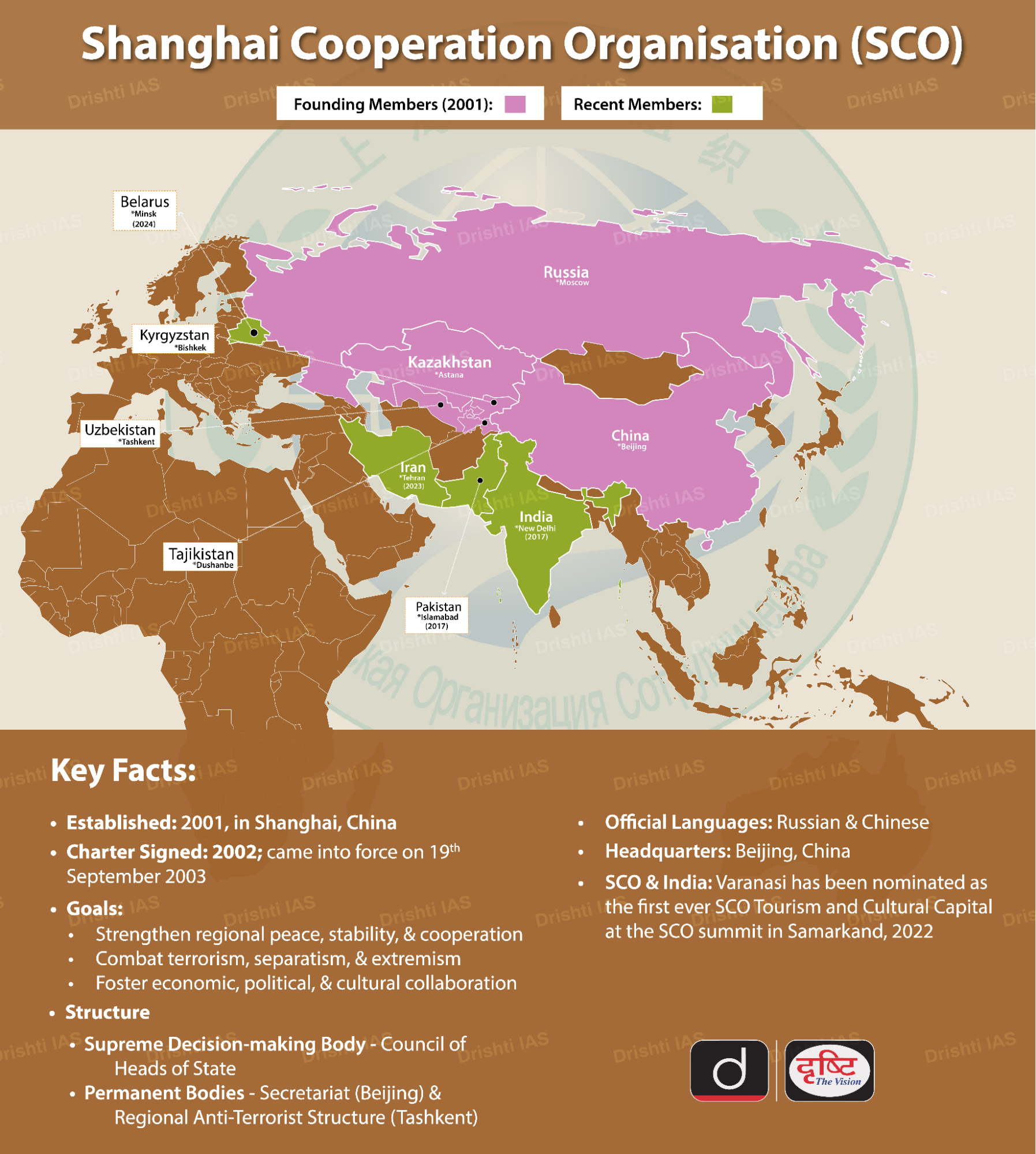
.png)
